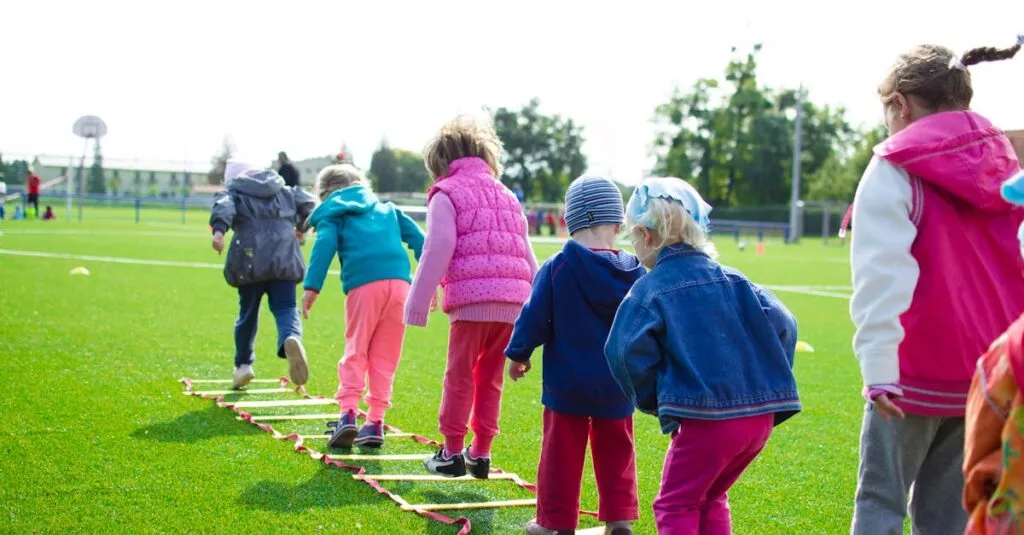Starting with Simple Tasks
Introducing teamwork to pre-schoolers starts with simple tasks. Begin with collaborative activities like building a block tower or a group art project. These simple tasks are great icebreakers and help kids understand the basics of working together. Similarly, cleaning up toys together post-playtime fosters cooperation. Such low-stakes environments teach children to appreciate teamwork’s intrinsic value. For parents, it’s essential to stay involved and gently guide interactions. Praise your child for helping or being kind to others during these activities. It’s a step-by-step process, but you’ll be surprised at how quickly they catch on.

Using Bible Stories
Bible stories are excellent tools for teaching teamwork. For instance, the story of David and Jonathan is a tale of true friendship and cooperation. Another fantastic story is the miracle of feeding the 5,000, showing how Jesus coordinated with his disciples to feed the multitudes.
Share these stories at bedtime or during quiet times. Make them interactive by asking questions and encouraging your child to think about the characters’ actions. Use simple language and ask for their thoughts on what happened. This not only teaches them cooperation but also connects them with their faith.
Engaging Group Activities
Group activities are key to embedding the spirit of teamwork in young minds. Host playdates with structured group games like ‘Follow the Leader’ or ‘Simon Says,’ which naturally require listening and cooperation. Sunday School classes often provide opportunities for such interactions in a church setting. These scenarios are perfect for practicing patience, taking turns, and working towards common goals.
Additionally, consider organizing small volunteer projects suitable for their age, like coloring cards for elderly church members. These communal activities root the values of teamwork and service in a fun, engaging manner.

Addressing Emotional Challenges
Navigating the emotional challenges of teamwork is pivotal. Expect some hiccups along the way; it’s natural. Children may feel frustrated if a team activity doesn’t go as planned or if they don’t get their way. Teach emotional regulation by acknowledging their feelings. Say things like, ‘I see you’re upset because you wanted to do it your way, but it’s important to work together.’ Role-playing different scenarios at home can also prepare them for real-life situations. Encourage empathy by asking them how they’d feel in someone else’s shoes. These discussions create a safe space for expressing and processing emotions.

Leading by Example
Children learn best by example. Show them how it’s done through your actions. Whether it’s collaborating on a family project or helping a neighbor, your child is watching and learning. Use these moments to talk about the importance of teamwork and helping others.
Additionally, involve them in your day-to-day tasks. For instance, while cooking dinner, assign them small tasks to do with you. Explain the concept of working together towards a common goal. These real-life applications solidify the abstract idea of teamwork into something tangible and relatable for them.

Fostering Positive Reinforcement
Positive reinforcement can significantly impact how children perceive teamwork. Celebrate their successes, whether big or small. When your child exhibits cooperation, acknowledge it with verbal praise or a small reward. This reinforces the behavior and makes them feel valued.
Moreover, create a ‘teamwork chart’ where you track cooperative behaviors and reward collective family efforts. This method not only motivates the child but also instills a sense of community within the family unit. By consistently pointing out and rewarding teamwork, children will naturally gravitate towards it, seeing it as a rewarding and enjoyable endeavor.

